Carriage worker turned landscape painter - Charles Harold Davis
Amesbury's history includes many success stories, from entrepreneurs, labor activists, film stars, and poets. Margie Walker, local history librarian has chronicled many of them in her most recent book, Legendary Locals of Amesbury. One of those individuals was a local businessman in the carriage industry, Jacob Huntington, whose generosity facilitated the rise of Amesbury’s most successful artist, Charles Harold Davis. An accomplished landscape painter, Davis got his start with the brush in the carriage factories of Amesbury. He was employed there for five years and spent much of his time applying finish painting to vehicles; his work included graphic designs as well as pictorial scenes. Huntington sponsored Davis with $1000 to allow the young painter to continue the education he had begun at the School of the Museum of Fine Arts Boston, abroad in France. Today his paintings are in the collections of the MFA and the Metropolitan Museum of Art, among dozens of others.
The Amesbury Public Library local history collection includes nearly 20 works by this prominent artist. As archivist I oversee the collection which includes preservation efforts. Today we took a significant step toward improving the health of a portion of the Charles H. Davis collection. This included updating the hardware and hanging systems and relocating several objects to improve their environmental conditions and provide better access for viewing these lovely paintings.
The project required assistance beyond what we have available on staff at the library. An art and antique specialist, Jay Williamson (a member of the city’s historical commission and also the speaker at our annual meeting in 2015) made critical recommendations about placement and developed a site and object specific approach to the hardware. To execute this plan we enlisted the careful help of Geoff Cyr from the city’s facilities department. Cyr carefully hung five paintings today with incredible attention to detail. We are thrilled with the result and thought we’d share some images for those of you who aren’t able to come in and see the paintings in person. This is phase one of this project.
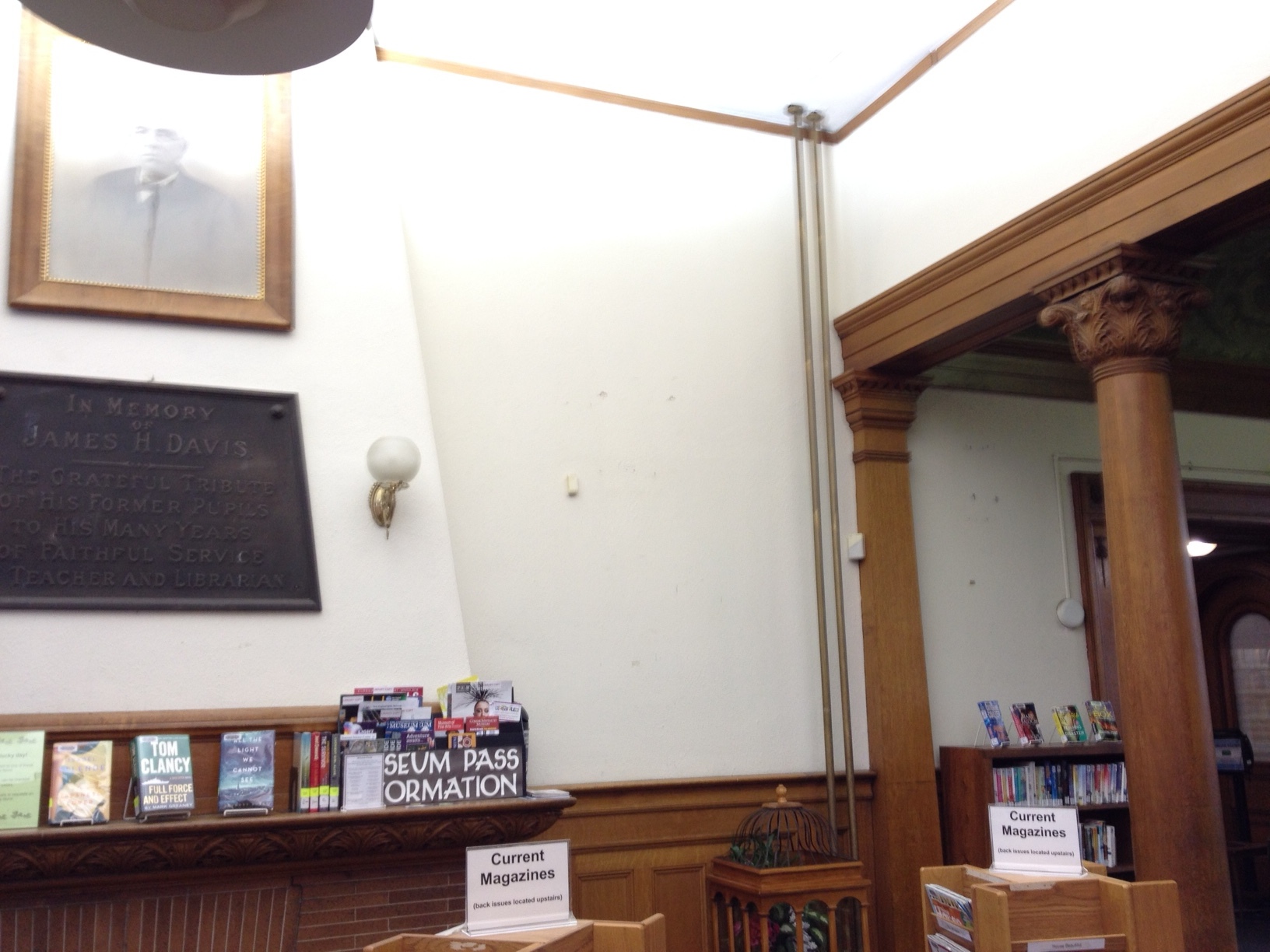
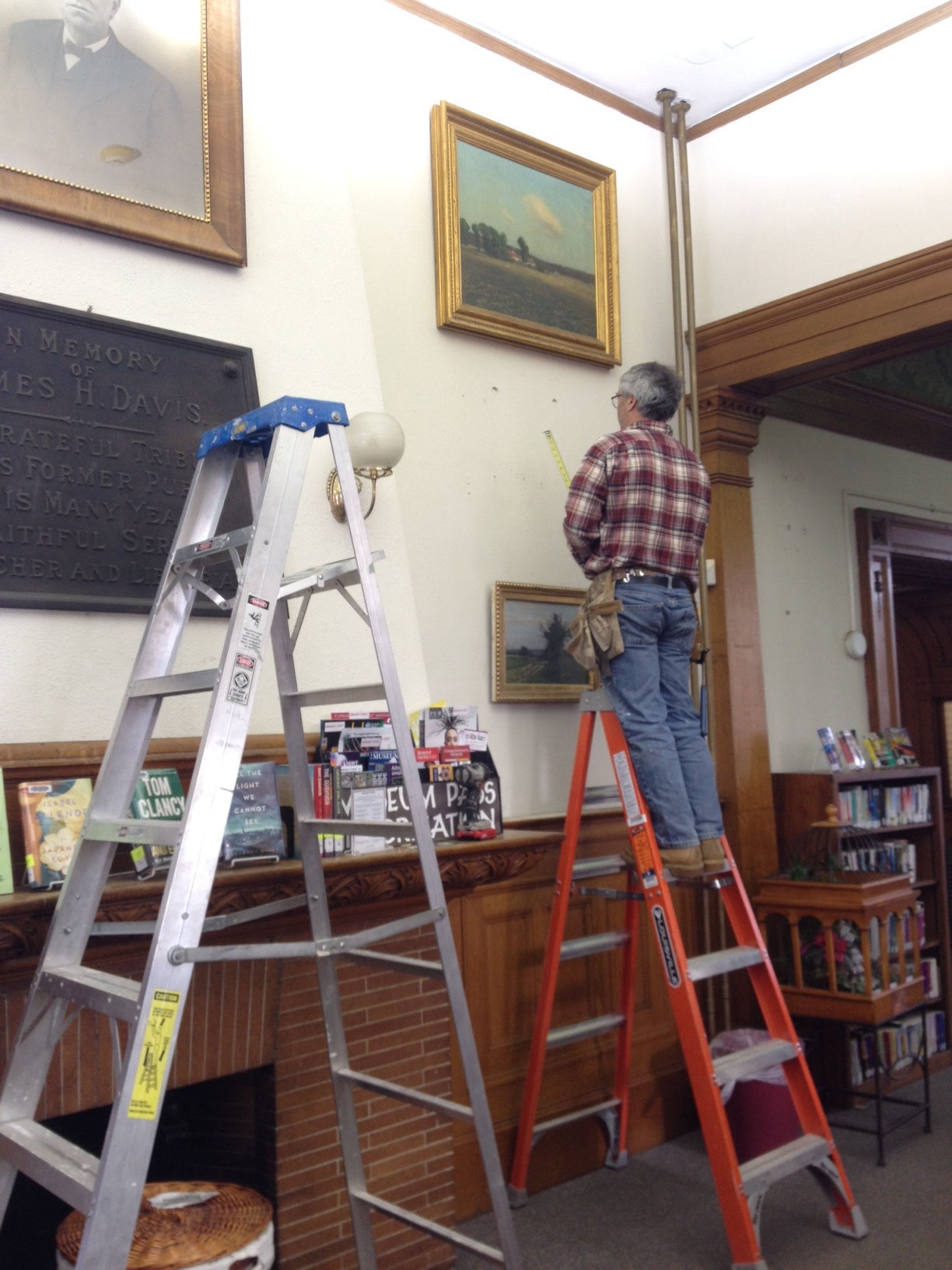
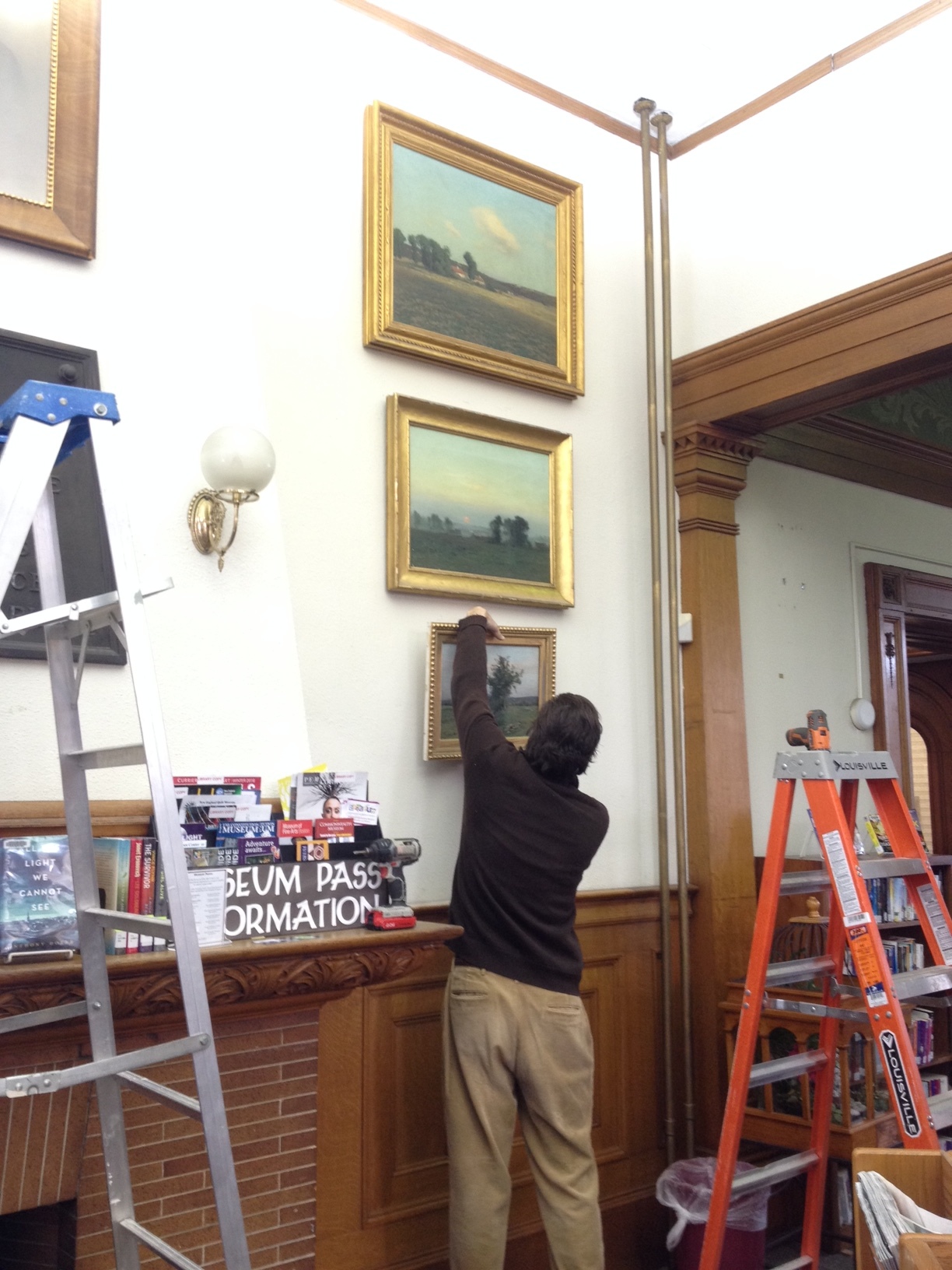
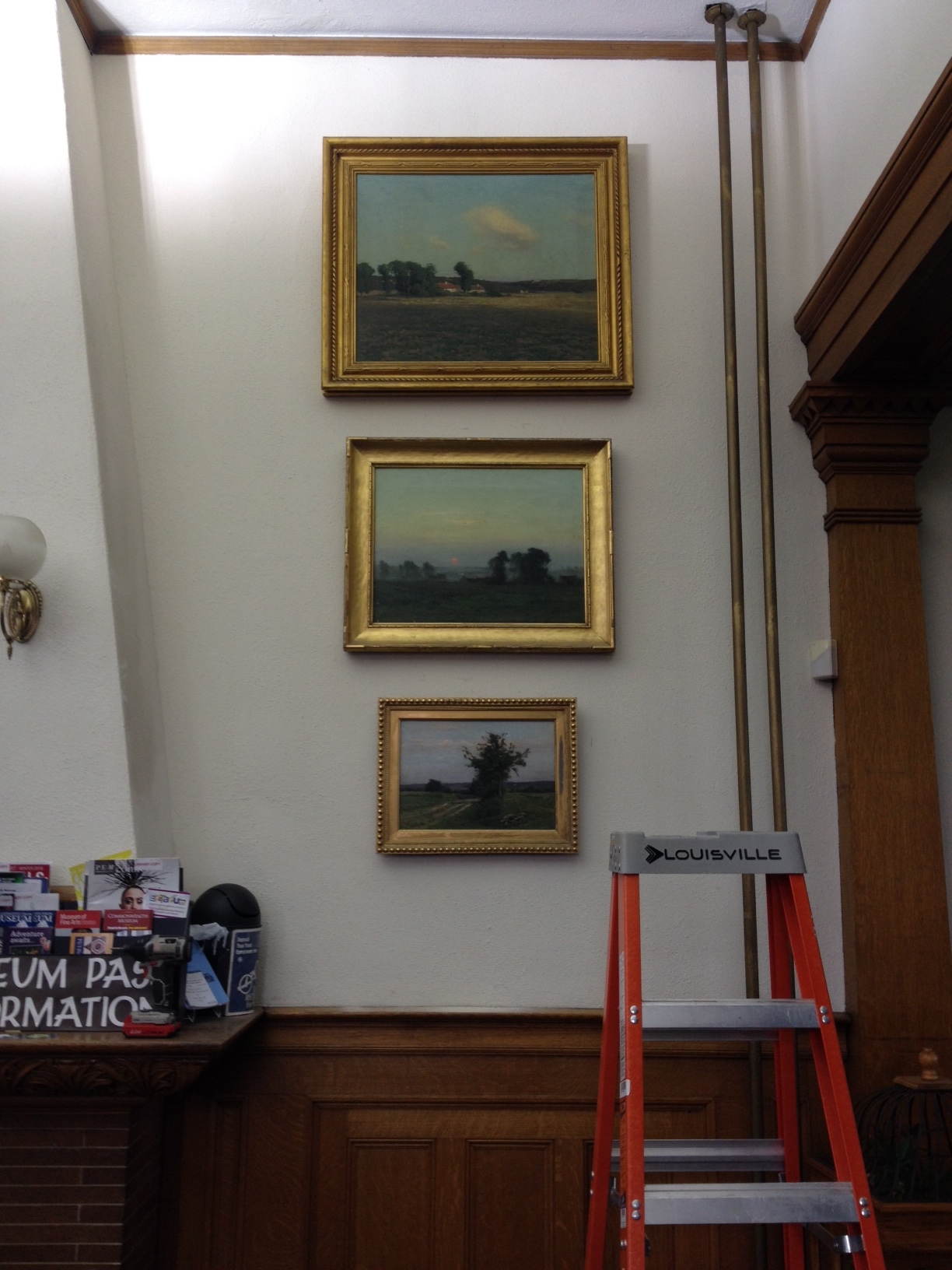
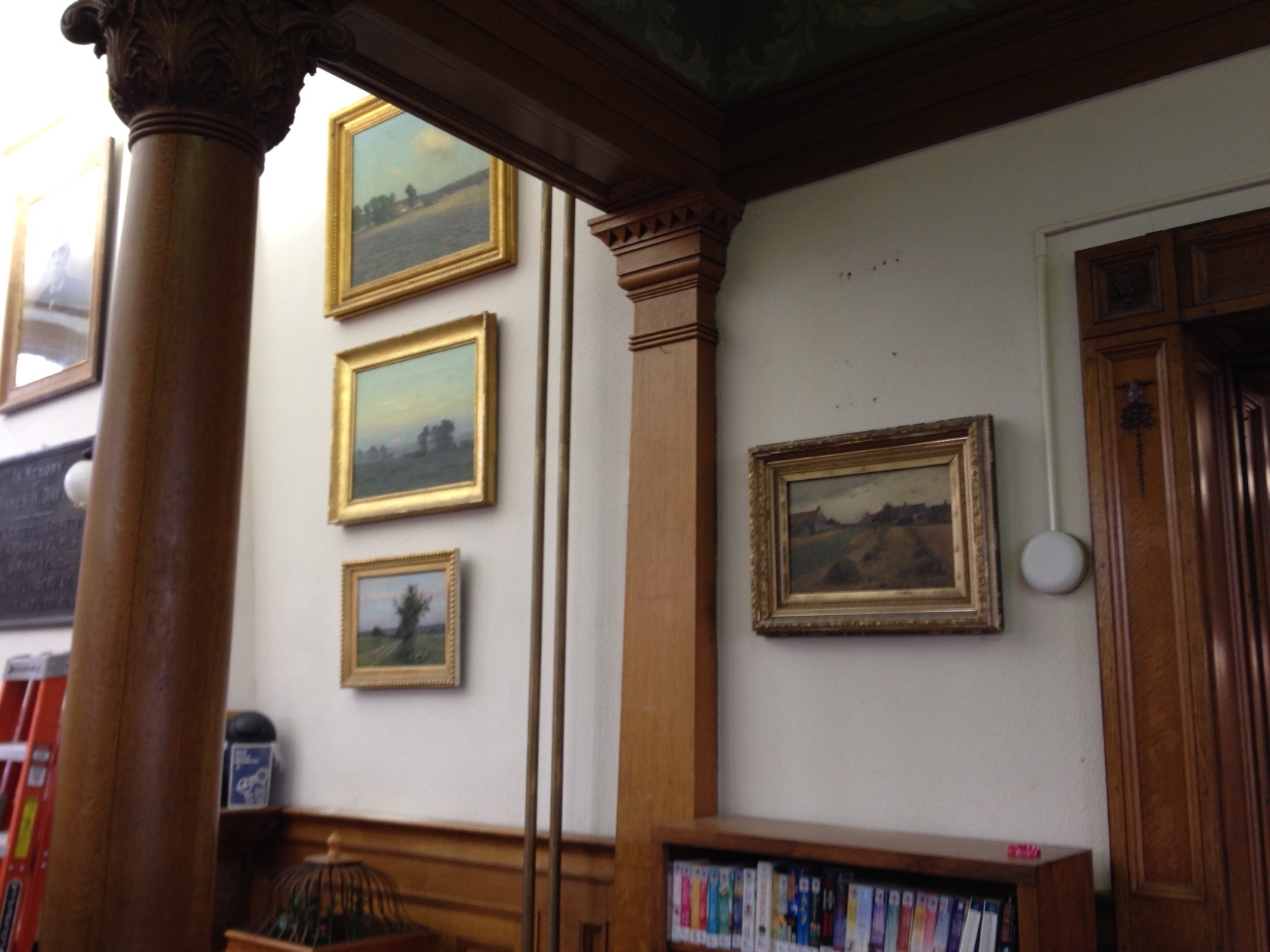
In a few weeks we will be retrieving the remainder of the collection from its current home in off-site storage. We hope to have several more paintings up for view in the library in the next couple months.
At the carriage museum we know that carriages are only the beginning. This tale of a carriage worker turned landscape painter connects industry to the arts. What a great story!
